Bowhunter by Fall
June - Archery Gear, Mentors, and Practice
Hello future bowhunters! Since we sent you our notes for May, we hope that you’ve had a chance to think about the adventure and challenges that come from spending time in the field. To stay on the timeline, we need to discuss archery gear, finding some help, and improving you shot.
Mentors
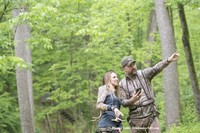
Mentors: Friendship and Guidance
When starting a hobby or sport that is new to you, it always helps to have some “social support”. Whether that person provides you with information, advice, or is simply a shooting companion to keep practicing fun, a partner is very valuable.
These friends are often called “mentors” when it comes to hunting. A great mentor is experienced in what you are trying to learn, eager to share what they know, and excited to share the outdoors with new recruits. You will need someone to share great stories with around the campfire or dinner table, after a long day in the field too.
|

Mentored Hunts
The Texas Parks and Wildlife Department can help you with locating a mentor too! TPWD’s Mentored Hunts offer a chance to learn from folks with years of experience and a passion in sharing it. Mentors will be alongside you for the whole experience to answer your questions, insert their own stories and offer advice. These hunts target different game species too! In addition to hog and deer, firearm hunts are offered for waterfowl and squirrel.
|

How to Find Your Own Mentor
Community resources can help you find other archers. You may be surprised to find out that you have a friend or family member who has experience hunting. Sometimes it only requires a conversation getting started to find that person. Maybe you did not know that they hunt because they have taken a break, but they are looking for a reason to start again. You could be that reason!
Try Your Favorite Social Media – A post to your network that expresses your interest as a beginner and a desire for help could return surprises.
Your Local Retailer – At bowhunting360.com you can enter your zip code to find stores near you. Small shops may offer you a greater archery focus and individual help, but do not be surprised by the expertise that can come from the hunting counter at your “big box” stores too!
Archery Clubs – Did you know that there are many local archery clubs of folks who enjoy target shooting, or use the on-site archery range to practice for the hunt? More archers means that clubs will continue to thrive. Enter your location info here to find and join the crowd.
Hunting 101s – Are you slightly more independent? Head to one of these in-person workshops to get started and have your questions answered. Then it will be in your hands to do some planning and carry the skill forward to the field.
Other Ideas and suggestions are available here.
|
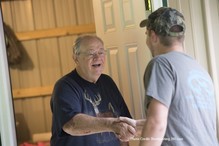
What to Look for in a Mentor and How to Get Started
When finding your mentor, ensure that you have established comfort with that person. If they are already a friend, great! If not, start slowly and build up that trust. Meet for a meal or coffee in a public place, discuss your hopes or plans, talk about their experience and show interest in the mentor’s story. When the conversation ends, set up a place and time to practice.
Target practice needs to occur often before you can take a confident shot in your chosen hunting season. Discuss tips and tricks that your mentor has used to improve their accuracy. Talk about advanced gear to add to your equipment, including a tree stand or hunting blind. Ask them to bring a few of these items along to your next session and give them a try. It is always easier to buy after you have tested. Discuss their favorite stores or websites for finding deals and tips. Do not forget to enjoy the company and conversation too!
|
Bowhunting Gear
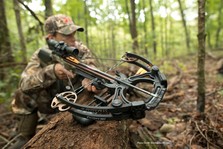
Compound or Crossbow?
Now that you’ve decided to become a bowhunter, the next question is: “Compound Bow or Crossbow?”. The answer will often come down to “why” are you choosing to bow hunt and then “what are your abilities”. If you want the greater challenge of a compound bow that requires dedicated practice at shooting and getting extremely close to your quarry, then a compound bow may be for you. If you prize efficiency and are focused on the harvest of game meat and/or a transition to or from rifle-hunting, then a crossbow may be a better hunting arm for you. Consider too, that compound bows tend to require greater upper body mobility than a crossbow equipped with a cocking device. Based on your decision, you’ll want to consider the following equipment:
|
 |
|
Compound Bow Needs
- Release Aid
- Quiver
- Peep and Sight
- Arrow Rest
- Stabilizer
- Wrist Sling
- Bow Sling
- Arrows of a specific length for you
|
 |
|
Crossbow Needs
- Scope
- Quiver
- Crossbow cocking device/rope
- Rail lube
- Crossbow sling
- Bolts matched to your crossbow
|
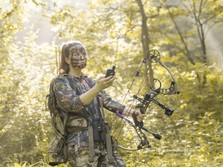
Selecting a Bow
When acquiring your hunting arm, it may be “Ready to Hunt” (“RTH”) out of the box or it may require setup and customization to you, specifically. Consult with the retailer, manufacturer or an experienced archer to get properly outfitted with your first bow. They will help you determine your shooting eye dominance and draw length, select the perfect bow and suggest appropriate accessories. Essential accessories include string wax, an Allen wrench assortment or bow-specific maintenance tools and a case because any bump, drop or extreme atmospheric conditions can affect the functionality, effectiveness and safety of your bow or crossbow.
|
 |
|
Arrows
Whether you get arrows for a compound bow or bolts for a crossbow, you’ll need to equip your projectiles with the appropriate size practice/field tips to train with and broadheads to hunt with. The manufacturer and professional retailers have the information for matching arrows, accessories and the hunting arm.
Arrow wraps and lighted nocks are not essential, but can be added to aid in diagnosing your shooting accuracy, indicate shot placement on game and aid in recovering your projectile (and game animal!).
- Arrows or bolts matched to your size
- Practice/Field tips
- Hunting broadheads
|

Tree Stands
Tree stands allow hunters to elevate their hunting position, increasing the field of view and shot opportunities while reducing their visual and scent impact on the area. Follow established safety procedures and always use a tree stand safety harness, good climbing system and haul line. You will need each of the following to use a tree stand effectively.
- Tree stand safety harness
- Lineman’s rope
- Haul Line
- Climbing Sticks or Steps
|
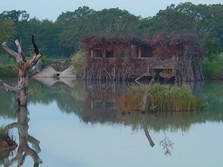
Ground Blinds
Are you not interested in heights? Ground blinds are hideouts for hunters in the field that provide concealment, shelter from the elements and shooting opportunities. They can be permanent structures, mobile or built out of naturally occurring materials in the hunting area. Larger ground blinds can accommodate multiple people, like a new bowhunter and their mentor.
- Ground blind
- Chair, stool or bucket seat
|
Other Optional Hunting Accessories Include
- Bug Repellent
- Deer Calls (bleats, grunts, rattling sticks, etc.)
- Cover and Attractant Scents
- Wind Direction Checker
- Drag Rope or Game Cart

Clothing and Apparel
Equip yourself with the proper clothing and footwear based on the weather conditions and follow best practices for outdoor recreation. This may include sun protection, layering, rain resistance, etc. Also consult regulations for your hunting area: is hunter orange required? Match the color pallet or camouflage pattern of your clothing to help conceal you from your quarry.
- Camouflage shirt and pants
- Boots
- Facemask or face paint
- Gloves
- Hat
- Rain Gear
|
Target Practice
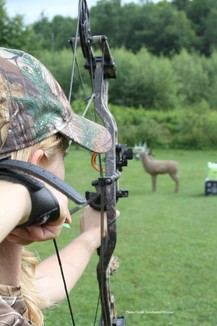
Improving Your Shot
I’m sure you’ve heard it all before, learning a new skill takes commitment, patience and lots of practice. Lets discuss how you can become an efficient archer before Fall.
Are you totally new to a compound bow? Start at the top here for the basics in shooting form.
Step one: Determine how much time you have available to commit to your new hobby. As a starting place it is recommended that you practice 4-8 hours weekly. If you began today, this allows for dedicating 100+ hours to honing your new skill. This video will help you create a summer practice schedule so that you can manage your time more efficiently.
Step two: Identify a location to practice and the equipment you may need to shoot safely. Your local archery shop is a great place to start. Many local archery shops have indoor and outdoor ranges that are available for customers to test out equipment and use as a practice facility. If you live in the city and aren’t sure where to shoot, click here for more details.
Is it safe to practice shooting from home? Before setting up a home range it’s important you understand your local laws and how to be considerate and prepared for you and your neighbors’ safety. Here are a few safe and alternative practice locations to consider:
- Local Archery Store
- Find a Local Archery Club
-
National Archery in the Schools Program (NASP) is an in-school archery program that provides a great opportunity for students in grades 4th-12th to learn the basics of archery safety and shooting skills.
- City/Town Parks Archery Ranges; i.e.,
- North Texas
- Central Texas
- South & Houston Texas
- Public Hunting/Shooting Land
- Outdoor Gun Range
- Friends/Family Land - if you’re setting up a range at home, please secure permission and follow all the standard safety rules and commands.
Step three: Work with your coach and/or mentor to develop a detailed practice plan which allows you to adhere to specific foundations, techniques, skills, and strategies that are necessary for becoming a bowhunter.
Final step: Practicing your physical fitness. Hunting can be a physically demanding sport, therefore, being physically up to the challenge will help stack the odds in your favor. Endurance exercise, push-ups, and core exercises are a few that you can do before and during the season to be physically prepared. Here are a few fitness tips specific to archery.
Practice and preparation for the outdoors is something we should take seriously. However, it’s equally important to enjoy these new experiences while creating memories to reflect on with family and friends. Virtual hunting has a place here too!
What specifics should you be practicing this summer? We know that you’re busy, so let us offer some tips with that in mind:
|
That was a lot of information! Thanks for sticking with us. In the July's installment we will be talking about starting your adventure in the field and getting your boots dirty. That includes more practice, finding a place to hunt and starting with scouting for sign. We will offer some help!
Do you have a friend who you would like to share this campaign with? Share this link with them, and we will catch them up to speed.
If you haven't yet, please take our 3 minute survey to tell us a little about yourself. Your responses will help us make the information more relevant to you!
TPWD's Community Archery Team
Texas Parks and Wildlife Department
(512)389-4361 (office)
Robert.Owen@tpwd.texas.gov
|